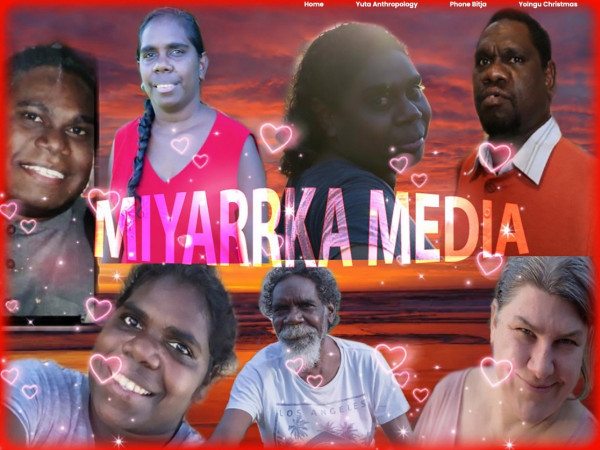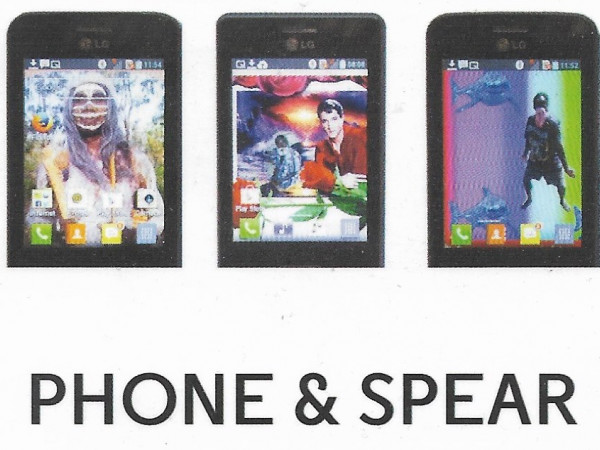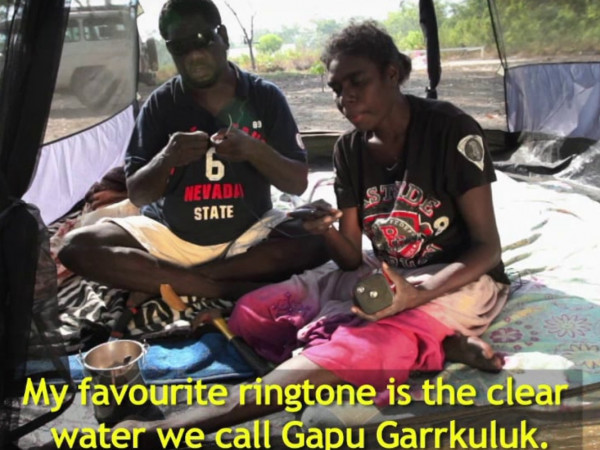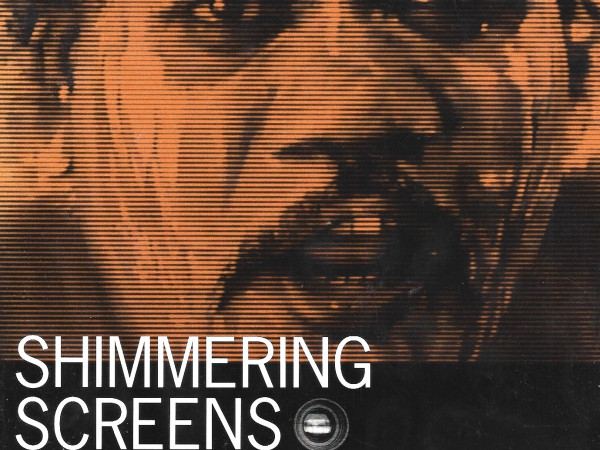Jennifer Deger
“The power of the new to revitalize the old…”
So, in the early ‘90s, I came from a background of working in media as a television and radio producer, and I decided to do a PhD in anthropology and became really interested in indigenous media as it was rolling out across the continent. And Satellite Dreaming was one of the first things I came across. And so, I sat down, kind of enthralled because there was a guide really to what was going on and what the investments were. And it was, you know, it was, it seemed to me that this is a really particular moment in Australian broadcast history - and in opening up questions of what and how media could work differently. And I'd left mainstream television really frustrated by the ways in which commercial imperatives decided, you know, what could go on screen. So, there were so many ways in which the material in the film and the projects of the people that you interviewed, variously, from the ABC through to, you know, EVTV …in Anangu land, held the promise of different ways of seeing and knowing the world through media. And in fact, you know, that has remained my project since then. So, I thought, you know, almost 30 years, the seeds from Satellite Dreaming have been growing and being cropped and re-arranged, and driving my own adventures and collaborations with Aboriginal people around media.
The question around indigenous media seemed to be something that both I was of professionally and intellectually interested in, but I also had skills - and that seemed to me really important that in going out and looking for a place to do my fieldwork, that I could actually contribute something rather than being an old-fashioned anthropologist, of just rolling up and expecting people to give me their time in their stories. So from the outset, really, I was motivated to see how I could contribute and learn at the same time.
When I first when I first started my PhD, I did about a nine month trip across Australia, in fact, visiting many of the places that featured in Satellite Dreaming, looking for potential field sites, looking for places where things were happening and where my skills and interests would be, you know, welcomed. And eventually I found myself in north east Arnhem Land working as a volunteer BRACS trainer - Broadcasting in Remote Aboriginal Communities Scheme.
I had… originally I went to Gapuwiyak … this relatively small community in north east Arnhem Land as a, as a case study.
So, I met this incredible Yolngu man called Bangana Wunungmurra, who said to me - one day he walked into the BRACS. I'd never met him. He looked around. He asked me a few questions and he said, you know, we can use this, we can use this media to strengthen culture. And I thought, hang on, I've just spent, I drove around Australia. I've spent so much time in different places, but this bloke has a vision that seemed to be really unique, specific, and he had the energy to… see it through. So, it was, it was that relationship and the depth of social, intellectual, political nuance that he brought to the videos that we made together, and that he brought to our collaboration, that made me think that, you know, this is like …this was a gift, really. It was a gift to my studies. It was something that meant a lot to, you know, his family and community. And I just thought, right, I'm so lucky. So, I stayed there and after his death, continued to work with his family and other people, because even in those early days, I knew that, in fact, it would be more than a life's work to really start to do justice to the richness and complexity and beauty of what was happening with the radio and the videos that we were making together.
He could see the relational and the connective possibilities in the media, from what it means to see an image and see beyond an image - you know, a very sophisticated sense of being within a visual field, and the ways in which a video camera can activate that, and can show the surface level of something, with a knowledgeable audience of Yolngu being able to see beneath the surface of the audience… see beneath the surface of the, of the frame. So, you know, he had a remarkable capacity to balance revelation and concealment within a frame; and to bring in an aesthetics that he'd honed in ritual, to inform the way that we…that we made video and radio together. So, he was the director, I was the producer, really. He would…and we would get in crews, like in making the Gularri: That Brings Unity film, we had a CAAMA crew come in, and so he directed them and I was organizing the helicopters and the boats and…and helping him to make it happen. And there was a particular moment in the making of that film where the Gularri is water that flows across north east Arnhem Land. And with that flow of water comes connections between various clans along the way. And so, we tracked that water. And we had an old man who was the 'märi-wartangu', who had a grandfather/grandchild relationship to that water, which gave him authority to tell the story - which, of course, Bangana was very, very careful to manage the politics of, kind of a regional story and make sure that we had the right person in charge and also the right landowners within the frame. And as we went along, at each site where this water was flowing … Bangana would tell the crew ‘And just get lots of shots of the water’. And then when we went to play back in the edit suite, with the …yes, there were lots of shots of the water, but they tended to be framed in like a picturesque frame. So, you had the water flowing through the country, with maybe a tree hanging over or something. And only in that moment did I realize that what he'd been saying is that that we want… that he wanted a full frame of flowing water. That was the water. So…and because, as he said, you know, in that water is everything. It's the stories, the sacred objects. And for people who know they'll be able to see in the water.
Between the Gularri film and Ringtone, there was another …10, 12, 15 years of production, of various things, of shooting, you know, shooting on country with people making, making videos for families, recording ceremonies. We made documentaries and installations around Christmas. So, there are a number of projects. Um, but I guess, you know, one of the …so Ringtone was a film made for audiences beyond Arnhem Land. And I mean, I think that's a really important distinction from the Gularri one which was definitely made primarily for Yolngu. And so, this is a development of the work that I've been doing with Paul Gurrumuruwuy, who for the last 12 years has been my main collaborator - he and his wife, who tragically passed away in 2011. So, we had started that work around mobile phones together, and Paul and I have continued it. So, Ringtone was a film that was about Miyaarka Media, the media group that we formed, to be based in Gapuwiyak and to experiment with the ways in which media could be used to facilitate Yolngu ways of seeing, knowing, connecting and innovating. Ringtone was a very simple film that we made very, very quickly in a number of days - although we did go back and do a second shoot to make it longer, when we saw that the form was working…
…which my nephew actually shot - and he wanted, you know, he took a whole number of really beautiful cutaways. And I said, no, no, you don't understand. This is the mode. This is a really comfortable mode for Yolngu to be speaking to others. In this case, they didn't know the audience, but they did know that, you know, that this was an opportunity to tell a little story about themselves straight down the barrel of the lens.
…originally we made it as …something to go with a larger exhibition work about the Yolngu use of mobile phones. So, the frame that we chose, the static frame, the … straight to camera, the quietness of it was, was, you know, we decided that that would be a really nice counterpoint, and the HD quality, to the films that we were exhibiting and projecting beside it, which were made on … phones, and had that really lovely kind of grainy quality of those early phones, and where people danced wildly …and made fun with the possibilities of them filming themselves. So, you know, if the ‘Gapuwiyak Calling’ exhibition celebrated the moment that in fact, mobile phones meant that people like me would no longer really necessary to stump up with the equipment and… the budget: people were just making and sharing their own video.
Mobile phones gave people an opportunity to, to remediate their own culture. So, there was a sense of both technical, technological possibilities that had, you know, that was literally in people's hands for the first time. But there was also the sense … the possibility of innovation and play. And so while there are, you know, deep cultural roots in the collage images that people make or in the ringtones of people record, there's also a sense in which people are, you know, enlivening their social relations, including with the land and the old people through the phone. And so and so, you know, I guess in comparison to Michaels who, you know, remains a kind of touchstone figure, what the… mobile phone material that Miyaarka Media have made and written about collectively, is… shows that, you know, thinking about tradition, doesn't help us: tradition is a very binding and bounded term, and rather they would talk about the energy of the new, and the power of the new to revitalize the old.
The relational aspects means that, in my view, these technologies are neither simply traditional nor, you know, ‘intercultural’. It's a, it's a dynamic in which people are yes, very consciously imagining, negotiating, performing the potential of relationships with other people in other places because, of course, the phone itself, you know that that brings YouTube into everyone's hands, too. So, I think this media is inevitably part of the, you know, we might say a contemporary mediascape where, you know, lost loved ones and Charley Pride and Yothu Yindi, and Gangnam Style all sit as part of a repertoire of of song and image that people can draw from and remix together.
…and in that act of remixing, it's, it's, you know, people are participating in the remix culture of the moment, while at the same time insisting on specific forms of differences and belongings that matter as well. And so, it's that dexterity in being able to navigate that world and then come back and make specific kinds of meanings and connections and forms of identity that matter …
It seems to me that, that mobile phones and the forms of…and the networks of connection that they enable, which are obviously of a very different order to any kind of broadcast - whether it's, you know, a national broadcaster or remote community broadcasting - have really challenged the model that was set up all those years ago. And it seems to me that there's great challenges for indigenous media associations, particularly remote ones, to, you know, find the new generation of broadcasters who… and to find ways in which the capacities of the phone, and the kinds of connections, and the kinds of innovations, and the ways in which the phones enable people to feel like they're participating in something both intensely local and global.
I think that it's important to really acknowledge ICTV’s role - that, you know, NITV, I think now is a success. It's, it's watched by a lot of people and we often turn it on here. But its sister organization, ICTV, which is the portal for much more community-based production is a really important aspect not to leave out of the picture, and that continues through some of the, you know, the imperatives, I guess, of Eric Michaels and EVTV, and Warlpiri Media and all those bush based Indigenous broadcasting communities - that's where they get a lot of airtime.
The moment of indigenous broadcasting in which voice could be amplified and mediated and connected, it was a particular historical moment, technological moment… that served its purpose. And NITV, yes, SBS, ABC, those kinds of national broadcasters - but then there's this whole other level of activity that's much, much less organized and, as a result, much more vital.
When I started off in the 90s, you know, this was the time of the politics of representation. This was the time that precisely these technologies were allowing indigenous people to claim space to amplify their own voice. And coming from my own media background, you know, I'd come to anthropology thinking, oh, you know, it'd be so cool to make films about other cultures and how much we can learn from other cultures. Well, I quickly realized how naive that was, and that, that really, you know, my job as an anthropologist was to… the opportunity for me as an anthropologist was to actually understand different ways of seeing and knowing the world through these technologies. What I hadn't expected and what has been therefore, the unexpected gift of my life, was that that the Yolngu people that I have worked with over this time, didn't accept when I said, ‘Well, it's just black, black hands on cameras, and I'll stand behind you and you hold the camera because this is your gig’. And… after some time, you know, people that I was close to, they looked at me and they said, ‘Well, you know. What's wrong with you? Don't you want to be involved?’ So there was this overt, explicit invitation to be involved, to participate in forms of co-creativity, in which there was a commitment to a shared project that was grounded in the social values, the political struggles, the ways of saying that came from Gapuwiyak. We were always in what we did, answerable to senior Yolngu elders who looked… over that and oversaw what we were doing. But, the…you know, we talked about the intercultural before, and… it was in my relationships with Yolngu, the invitation to be part of something, to make something that none of us knew quite what it would be. You know, this is the innovative potential of the media. And so, you know, they needed my skills. And I was glad to be part of something. And so things evolved. And along the way, we've had, we've made work that people are proud of, that has had international traction, and we've had fun and traveled the world. And so these doors have opened in a way that, um, has meant that the skills that I first brought there, and my capacity to find money and fund projects, has led to a blossoming of experimental media work and innovation that, in which I can claim my role alongside a whole team of others.




